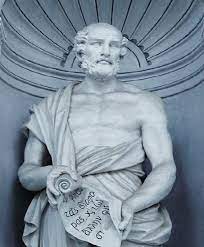Megasthenes was a Greek historian and diplomat who lived in the 4th century BCE. He was appointed as an ambassador to the court of the Mauryan king Chandragupta Maurya and spent several years in India. During his stay, he wrote a book called “Indika” which provided a detailed account of Indian society, culture, religion, and politics. This article will discuss Megasthenes’ life, his works, and his contributions to the understanding of ancient India.

Table of Contents
Megasthenes’ Life
Megasthenes was born in 350 BCE in the Greek city of Ionia, which is located on the western coast of modern-day Turkey. He belonged to a wealthy and influential family and was well-educated in philosophy, literature, and history. In 302 BCE, he was sent as an ambassador to the court of Seleucus I Nicator, one of the successors of Alexander the Great, who had established his kingdom in the eastern part of the empire.
Megasthenes’ Works
During his stay at the court of Seleucus I Nicator, Megasthenes heard about the great Mauryan Empire in India and became curious to know more about it. He requested permission from Seleucus to visit India, and in 302 BCE, he arrived at the court of Chandragupta Maurya, the founder of the Mauryan Empire.
Megasthenes spent several years in India, during which he traveled extensively, observed the customs and practices of the people, and recorded his observations in his book “Indika.” Unfortunately, his original work has not survived, and we only have fragments of it preserved in the works of later writers.
Indika
The book “Indika” provided a detailed account of Indian society, culture, religion, and politics. Megasthenes wrote about the social and economic organization of the Mauryan Empire, the caste system, the role of women in society, and the religious practices of the people. He also described the natural resources of India, including its flora and fauna, and the methods of agriculture and irrigation used by the people.
Account of Pataliputra
One of the most significant parts of Megasthenes’ “Indika” is his detailed description of the Mauryan capital city of Pataliputra (present-day Patna). Megasthenes described the city’s walls, palaces, temples, and administrative buildings. He also provided information about the king’s court, including the king’s throne, the royal treasury, and the system of justice.
Megasthenes’ description of the Mauryan army
Another important aspect of “Indika” is his account of the Mauryan army. According to Megasthenes, the Mauryan army was the largest and most well-organized in the world, consisting of 600,000-foot soldiers, 30,000 cavalry, and 9,000 war elephants. He also wrote about the training and discipline of the soldiers and the methods of warfare used by the Mauryan Empire.
Megasthenes’ Influence
His work was widely read and cited by later Greek and Roman writers, including Strabo, Diodorus Siculus, and Pliny the Elder. His work played a significant role in shaping the Western perception of India and its civilization for centuries to come. Megasthenes’ “Indika” was the first detailed account of India written by a foreigner, and it provided valuable insights into the culture and civilization of ancient India.
Conclusion
Megasthenes was one of the earliest Western scholars to document the customs and practices of ancient India. His work “Indika” was an important contribution to the understanding of Indian society, culture, and politics, and it influenced the Western perception of India for centuries. Although his original work has not survived, fragments of it preserved in the works of later writers continue to provide valuable insights into the ancient Indian civilization.
Important Links